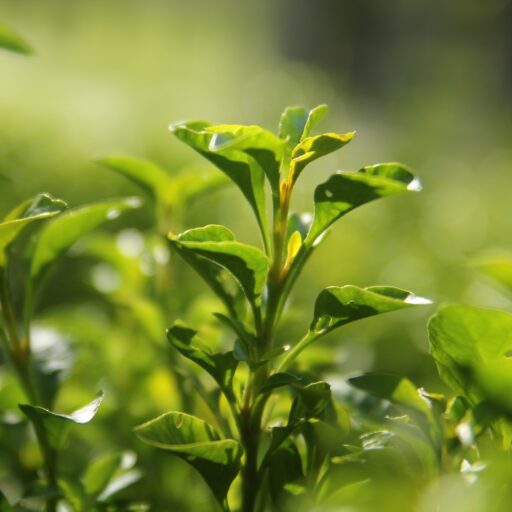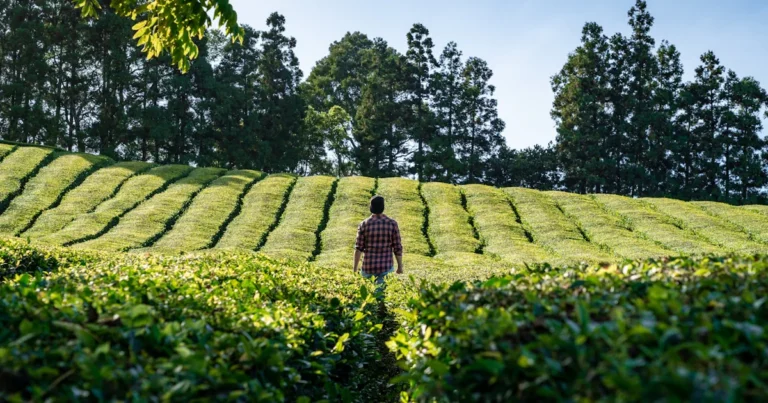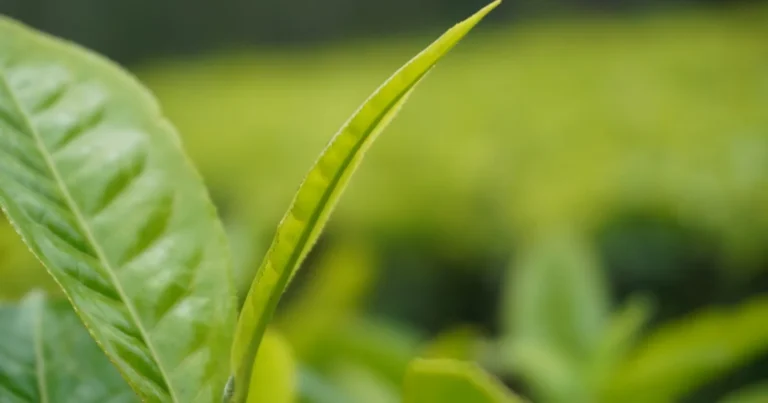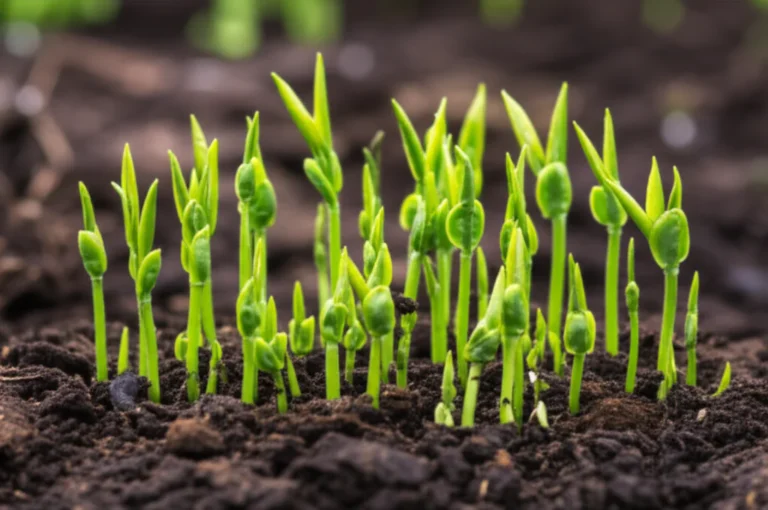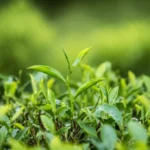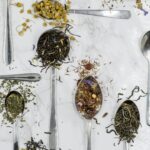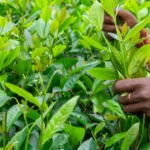Support our educational content for free when you purchase through links on our site. Learn more
Can You Grow Tea Plants in Containers? 7 Expert Tips 🍵 (2025)
Ever wondered if you need a sprawling garden bed to grow your own tea? Spoiler alert: you don’t! At Growing Teas™, we’ve nurtured countless tea plants right in containers—on balconies, patios, and cozy indoor nooks. Growing tea in pots isn’t just possible; it’s often better for controlling soil, moisture, and climate. Imagine plucking fresh tea leaves from your own container garden, no backyard required!
Stick around, because later we’ll reveal the top 5 tea varieties perfect for pots, share our secret soil mix recipe, and explain how to keep your container tea plant thriving through winter. Plus, we’ll walk you through harvesting and processing your leaves into a delicious brew. Ready to turn your home into a mini tea plantation? Let’s dive in!
Key Takeaways
- Tea plants thrive in containers with the right pot size, acidic soil, and consistent care—no garden bed needed.
- Choose compact varieties like Camellia sinensis var. sinensis for best container success.
- Use well-draining, acidic potting mix (peat moss + perlite + organic compost) tailored for acid-loving plants.
- Water deeply but don’t overwater; container plants dry out faster but are prone to root rot if soggy.
- Prune regularly to encourage bushy growth and abundant leaf harvests.
- Protect container plants from frost by bringing them indoors or to sheltered spots in winter.
- Harvest young leaf flushes and experiment with DIY tea processing for fresh, homegrown brews.
👉 Shop essentials for your container tea garden:
- Fabric grow bags & large planters: Amazon | Walmart
- Acidic potting mix & amendments: Espoma Organic Potting Mix | Perlite
- Fertilizers & pest control: Miracle-Gro Miracid | Bonide Neem Oil
Table of Contents
- ⚡️ Quick Tips and Facts for Growing Tea in Containers
- 🌱 The Great Debate: Can You Really Grow Tea Plants in Containers or Do They Demand a Garden Bed?
- 📜 A Sip Through Time: The Enduring History of Camellia Sinensis Cultivation and Its Container Adaptability
- 🏡 Why Go Potty for Tea? The Surprising Perks of Container-Grown Tea Plants
- 🌿 Choosing Your Tea Companion: Our Top 5+ Best Tea Varieties for Container Growing Success
- 🧤 Getting Your Hands Dirty: Essential Steps for Potting Your Camellia Sinensis Plant
- 💧 The Art of Nurturing: Ongoing Care for Thriving Container Tea Plants
- 💦 Watering Wisdom: Quenching Your Container Tea Plant’s Thirst Just Right
- ✨ Feeding Your Future Brew: Fertilizing Your Potted Tea Plant for Lush Growth
- ✂️ Shaping Your Tea Dream: Pruning Your Container Tea Plant for Health and Abundant Harvests
- ☀️ Sunlight Secrets: Optimal Light Conditions for Your Indoor and Outdoor Potted Tea
- 🌫️ Humidity Haven: Creating the Perfect Microclimate for Happy Container Tea Plants
- ❄️ Winter Woes? Protecting Your Container Tea Plants from Frost and Cold Snaps
- 🐛 Battling the Bugs: Common Pests and Diseases of Container Tea Plants and How to Win
- 🍵 From Leaf to Cup: Harvesting and Processing Your Homegrown Container Tea for the Perfect Brew
- 📈 Beyond the Basics: Advanced Tips for the Dedicated Container Tea Grower
- 🤝 Cultivate Your Relationship with Us! Join the Growing Teas™ Community
- 🎉 Conclusion: Your Container Tea Journey Awaits – Start Brewing Your Own Success!
- 🔗 Recommended Links: Dive Deeper into the World of Container Tea Growing
- ❓ FAQ: Your Most Pressing Container Tea Plant Questions Answered
- 📚 Reference Links: Our Trusted Sources for Tea Cultivation
Hello, tea lovers and aspiring green thumbs! We’re the team at Growing Teas™, and if there’s one thing we know, it’s the pure joy of watching your very own tea leaves unfurl. Today, we’re tackling a question we hear all the time: “Can I grow tea plants in containers, or do they require a garden bed?” We’re here to spill the tea, and trust us, the answer might surprise you! Many aspiring growers wonder which tea plants to grow at home, and container gardening opens up a world of possibilities.
⚡️ Quick Tips and Facts for Growing Tea in Containers
Pressed for time? Here’s the quick brew on growing your Camellia sinensis in a pot.
- ✅ YES, you absolutely can grow tea plants in containers! In fact, for many climates, it’s the best way to do it.
- ❌ Don’t use regular garden soil. It compacts easily and can lead to root rot. Always opt for a high-quality, well-draining potting mix.
- ✅ Acidic soil is non-negotiable. Tea plants are acid-loving fiends, thriving in a pH range of 4.0 to 5.5.
- ❌ Don’t let them dry out completely. Container plants lose moisture faster than those in the ground. Consistent watering is key.
- ✅ Size matters. Choose a pot that’s at least 10-15 gallons for a mature plant to give its roots room to roam.
- Fun Fact: All true teas—black, green, oolong, and white—come from the exact same plant: Camellia sinensis. The incredible variety in flavor comes from how the leaves are processed after harvesting.
🌱 The Great Debate: Can You Really Grow Tea Plants in Containers or Do They Demand a Garden Bed?
Let’s get straight to the point. The answer is a resounding YES! Not only can you grow tea plants in containers, but it’s often our recommended method for home growers, especially if you don’t live in a subtropical paradise.
Think of a tea plant, Camellia sinensis, as a rather adaptable evergreen shrub. While in commercial plantations they can grow into large bushes or small trees, they are surprisingly content to live in a pot. This makes them fantastic candidates for patios, balconies, and even sunny indoor spots.
So, why would you choose a pot over a plot of land? Oh, let us count the ways! We’re about to dive into the perks that make container tea growing a game-changer.
📜 A Sip Through Time: The Enduring History of Camellia Sinensis Cultivation and Its Container Adaptability
Before we get our hands dirty, let’s appreciate the journey of our beloved tea plant. The history of tea is a rich tapestry woven through millennia. Originating in the region where southern China, northern Burma, and India meet, Camellia sinensis has been cultivated for thousands of years. The earliest records of tea consumption date back to the 10th century BC in China!
Initially, these plants grew wild. However, cultivation began in earnest around 350-400 AD. For centuries, the methods of growing and processing were closely guarded secrets. It wasn’t until the 19th century that the British, desperate to break the Chinese monopoly, established vast plantations in India and Ceylon (now Sri Lanka). This long history of cultivation across diverse climates and terrains is a testament to the plant’s incredible adaptability. From misty mountainsides to carefully tended gardens, the tea plant has proven it can thrive in various settings—including, you guessed it, containers.
For a deeper dive into this fascinating story, check out our articles on the History of Tea.
🏡 Why Go Potty for Tea? The Surprising Perks of Container-Grown Tea Plants
Choosing to grow your tea in a container isn’t a compromise; it’s a strategic move! Here at Growing Teas™, we’ve guided countless gardeners to success with pots. Here’s why it works so well:
- 🌍 Total Climate Control: This is the biggest advantage. Tea plants are hardy to about USDA Zone 8 (some cultivars to 7 or even 6), but they don’t appreciate a hard freeze. Growing in a container means you can play Mother Nature, moving your plant indoors or to a protected spot when winter’s icy breath arrives. As The Cottage Peach notes in her video, “Grow Your Own Tea Plant | Growing a Container Tea Garden,” for those in colder zones like 6b, growing in a container to bring inside is the safest bet. (You can find this excellent video tutorial embedded above or by clicking #featured-video).
- 🔬 Perfect Soil, Every Time: Tea plants are divas about their soil—they demand acidic, well-draining conditions. In a garden bed, you’re stuck with the soil you’ve got, which might require extensive (and constant) amendment. In a pot, you are the master of the universe! You can create the perfect soil blend from the start.
- 💧 Water Management: As noted by Swanson’s Nursery, “Larger containers will require less frequent watering,” but container plants in general dry out faster than those in the ground. This might sound like a drawback, but it also gives you precise control over moisture levels, which is crucial for preventing root rot, a common killer of tea plants.
- 🐜 Pest & Disease Prevention: A plant on a patio is less susceptible to soil-borne pests and diseases. You can also easily inspect it from all angles and isolate it if a problem like spider mites or scale insects does appear.
- 🏙️ Small Space, Big Harvest: No yard? No problem! Container gardening is a “fantastic way to bring the joy of gardening to even the smallest of spaces,” as the experts at Swanson’s Nursery put it. A sunny balcony, patio, or windowsill can become your personal tea plantation.
🌿 Choosing Your Tea Companion: Our Top 5+ Best Tea Varieties for Container Growing Success
Ready to pick your plant? All true tea comes from Camellia sinensis, but there are two main varieties and countless cultivars, each with its own personality.
1. The Classic: Camellia sinensis var. sinensis
This is the Chinese variety, the OG of the tea world. It’s a slow-growing shrub with smaller leaves, which are perfect for making delicate green and white teas. Its compact nature and greater cold tolerance (hardy to USDA Zone 6 or 7) make it our top recommendation for container growing.
2. The Robust: Camellia sinensis var. assamica
Hailing from the Assam region of India, this variety has much larger leaves and grows into a small tree if left unpruned. It’s the backbone of bold black teas. While it can be grown in a large container, it’s less cold-tolerant and requires more space and pruning to keep it manageable.
3. The Cold-Hardy Contender: Specific Cultivars for Cooler Climates
Breeders have developed wonderfully resilient cultivars. Look for names like ‘Cold Hardy Tea Plant’ from nurseries like Fast Growing Trees, which is often recommended for zones 7-9 but can be grown in containers anywhere. Another great option is the ‘Small Leaf Tea Plant’, which is noted for its slow growth and suitability for pots.
4. Dwarf Varieties: Perfect for Small Spaces
While less common, some dwarf cultivars of Camellia sinensis are available. These are genetically programmed to stay small, making them ideal for indoor growing or very small balconies. Ask your local specialty nursery about availability.
5. Hybrid Heroes: Blending the Best Traits
Many tea plants, like the famous Darjeeling variety, are natural hybrids of the sinensis and assamica types, combining traits from both. These can be excellent container candidates, offering unique flavor profiles.
6. Beyond the Big Five: Other Notable Mentions
- Camellia sinensis ‘Rosea’: Known for its lovely pink flowers, adding extra ornamental value.
- Benifuuki, Saemidori, etc.: These are specific Japanese cultivars often prized for Green Tea Cultivation and can be grown in containers.
🧤 Getting Your Hands Dirty: Essential Steps for Potting Your Camellia Sinensis Plant
Alright, you’ve chosen your champion. Now for the fun part! Let’s give your tea plant a happy home.
1. Picking the Perfect Pot: Size, Material, and Drainage for Optimal Tea Plant Health
This is a critical first step. Don’t just grab any old pot!
- Size: Start with a pot that is about twice the size of the plant’s current root ball. You’ll need to pot up every few years, eventually aiming for a container that’s at least 15-25 gallons for a mature, productive plant.
- Drainage: This is non-negotiable. “Make sure your containers have drainage holes,” advises Swanson’s Nursery. If your decorative pot doesn’t have them, drill some yourself or use it as a cachepot (a decorative outer pot) with a functional nursery pot inside.
- Material: You have options!
- Terracotta: Classic and beautiful. It’s porous, which allows for great air exchange to the roots, but it also dries out very quickly.
- Glazed Ceramic & Plastic: These retain moisture better, which means less watering for you. They are a great choice for thirsty tea plants.
- Fabric Pots: Brands like VIVOSUN and GeoPot offer excellent aeration and drainage, making it almost impossible to overwater.
👉 Shop for Pots on:
2. The Foundation of Flavor: Crafting the Ideal Acidic Soil Mix for Container Tea Plants
Never, ever use soil from your garden in a pot. As Swanson’s Nursery points out, “Potting mixes are formulated to provide good drainage and aeration.” Garden soil becomes a dense, compacted brick in a container.
Your tea plant needs a mix that is:
- Well-draining
- Slightly acidic
- Rich in organic matter
You can buy pre-made potting mixes for acid-loving plants (like those for azaleas or blueberries) or create your own super-mix.
Our Growing Teas™ Perfect Potting Mix Recipe:
- 2 parts high-quality potting mix (like Espoma Organic Potting Mix)
- 1 part peat moss or coconut coir (for moisture retention and acidity)
- 1 part perlite or small pine bark fines (for drainage and aeration)
- A handful of compost or worm castings (for nutrients)
👉 Shop for Soil Supplies on:
3. Planting Your Precious Tea: A Step-by-Step Guide to Container Tea Plant Establishment
- Cover the drainage holes with a piece of screen or a coffee filter to prevent soil from washing out.
- Fill the bottom third of your new pot with your prepared soil mix.
- Gently remove the tea plant from its nursery pot. If it’s root-bound (roots circling the bottom), gently tease them apart with your fingers.
- Place the plant in the center of the new pot, ensuring the top of the root ball sits about an inch below the pot’s rim.
- Fill in around the plant with more soil, gently firming it down to remove air pockets.
- Water thoroughly until water runs freely from the drainage holes. This settles the soil and gives your plant a good first drink in its new home.
💧 The Art of Nurturing: Ongoing Care for Thriving Container Tea Plants
Potting is just the beginning of your beautiful friendship. Here’s how to keep your tea plant happy and productive.
💦 Watering Wisdom: Quenching Your Container Tea Plant’s Thirst Just Right
The golden rule of watering container plants is to water deeply but infrequently.
- How to Check: Stick your finger two inches into the soil. If it feels dry, it’s time to water. If it’s moist, wait another day or two.
- How to Water: When you do water, do it thoroughly. Pour water over the entire soil surface until it flows out of the bottom drainage holes. This ensures the entire root ball gets hydrated.
- Key Point: Never let the pot sit in a saucer full of water, as this can lead to the dreaded root rot.
✨ Feeding Your Future Brew: Fertilizing Your Potted Tea Plant for Lush Growth
Container plants are completely reliant on you for nutrients. Nutrients leach out with every watering, so regular feeding is essential during the growing season (spring through fall).
- What to Use: A balanced, acidic fertilizer is best. Look for fertilizers formulated for azaleas, rhododendrons, or camellias. We’ve had great success with liquid feeds like Miracle-Gro Miracid or granular slow-release options.
- How Often: For liquid fertilizers, apply every 3-4 weeks at half the recommended strength. For slow-release granules, apply once or twice during the growing season according to the package directions.
👉 Shop for Fertilizer on:
✂️ Shaping Your Tea Dream: Pruning Your Container Tea Plant for Health and Abundant Harvests
Pruning isn’t just for looks; it’s crucial for encouraging the bushy growth that leads to more leaves for harvesting!
- When to Prune: The best time for a major pruning is after the plant flowers in the fall or winter.
- How to Prune: To keep the plant a manageable size, you can prune it back by up to half its height. This encourages it to send out lots of new, tender shoots in the spring—which is exactly what you want to harvest!
- Maintenance: Throughout the year, you can snip off any dead or damaged branches.
☀️ Sunlight Secrets: Optimal Light Conditions for Your Indoor and Outdoor Potted Tea
Camellia sinensis enjoys a good amount of light but can be scorched by intense, direct afternoon sun, especially in hotter climates.
- The Sweet Spot: Aim for 6 hours of direct morning sun and some afternoon shade. An east-facing patio or balcony is often perfect.
- Indoor Growing: If you’re growing indoors, a southwest-facing window or a sunroom is ideal. If you don’t have enough natural light, a grow light can be a great supplement.
🌫️ Humidity Haven: Creating the Perfect Microclimate for Happy Container Tea Plants
Tea plants love humidity. If you live in a dry climate or are growing indoors during the winter when heating systems dry out the air, your plant will appreciate a little boost.
- Misting: A simple daily misting can help.
- Pebble Tray: Place the pot on a tray filled with pebbles and water. As the water evaporates, it will increase the humidity around the plant. Just make sure the bottom of the pot isn’t sitting directly in the water.
❄️ Winter Woes? Protecting Your Container Tea Plants from Frost and Cold Snaps
If you live in a zone where temperatures dip below freezing, you’ll need a winter care plan.
- Bring It In: The easiest solution is to bring your potted tea plant indoors. Place it in a bright location away from heat vents.
- Garage or Shed: An unheated garage or shed that stays above freezing can also work. The plant will go dormant and require very little water.
- Protection: For light frosts, you can cover the plant with a frost blanket or move it to a sheltered spot against a wall.
🐛 Battling the Bugs: Common Pests and Diseases of Container Tea Plants and How to Win
One of the benefits of container growing is fewer pest problems, but you should still be vigilant. The most common culprits are sap-sucking insects.
- Tea Scale: These look like small, white, fluffy bumps on the undersides of leaves.
- Spider Mites: These tiny arachnids are hard to see, but you’ll notice fine webbing and stippling (tiny yellow dots) on the leaves. They thrive in hot, dry conditions.
- Aphids: Small, soft-bodied insects that cluster on new growth.
- Chilli Thrips: These tiny pests cause brown, corky stripes on the undersides of tender leaves.
Your Battle Plan:
For most of these pests, a strong spray of water can dislodge them. For more persistent infestations, insecticidal soap or horticultural oil, like Bonide Neem Oil, is an excellent organic solution. Always spray in the evening to avoid burning the leaves.
👉 Shop for Pest Control on:
🍵 From Leaf to Cup: Harvesting and Processing Your Homegrown Container Tea for the Perfect Brew
After about three years of patient nurturing, your plant will be ready for its first harvest!
- The Harvest: The best tea is made from the newest growth. You’ll want to pluck the top two tender leaves and the unopened leaf bud, often called the “flush.” Harvesting in the spring yields the most flavorful leaves.
- The Processing: This is where the magic happens! The same leaves can become wildly different teas based on how you process them.
- Green Tea: To make green tea, you quickly heat the leaves after picking (by steaming or pan-firing) to prevent oxidation. Then you roll and dry them.
- Black Tea: For black tea, you roll or crush the leaves to encourage oxidation. You then let them sit in a cool place for a few days until they darken before drying them.
- Oolong & White Tea: These involve different levels of wilting and oxidation, creating a spectrum of flavors between green and black.
Experimenting with your own harvest is one of the greatest rewards of growing your own tea. It’s a delicious science project! For more ideas, check out our section on DIY Tea Blending.
📈 Beyond the Basics: Advanced Tips for the Dedicated Container Tea Grower
Feeling confident? Let’s level up your tea-growing game.
Growing from Seed: The Ultimate Patience Test
Growing tea from seed is a long but rewarding process. Tea seeds need to be fresh and shouldn’t be allowed to dry out. They require a period of cold stratification (a cool, damp period) to germinate. It’s a true labor of love, as it will be many years before you can harvest.
Propagating Your Passion: Expanding Your Tea Collection
A much faster way to get more plants is through cuttings. In the spring or summer, you can take 6- to 8-inch cuttings from softwood stems.
- Remove the lower leaves.
- Dip the cut end in rooting hormone.
- Plant the cutting in a moist, light potting mix.
- Cover with a plastic bag or dome to create a humid environment.
- In a few months, you should have a new, rooted tea plant—for free!
🤝 Cultivate Your Relationship with Us! Join the Growing Teas™ Community
We hope this guide has inspired you to start your own container tea garden! There’s nothing quite like the satisfaction of brewing a cup of tea that you’ve grown and processed yourself. It connects you to a rich history and offers incredible health benefits.
Have more questions? Had a stunning success or a learning moment with your potted tea plant? Share your journey with us in the comments below or join our online community. We’re all learning and growing together! Happy brewing
🎉 Conclusion: Your Container Tea Journey Awaits – Start Brewing Your Own Success!
So, can you grow tea plants in containers? Absolutely! In fact, for many home growers, container cultivation is the best way to enjoy fresh, homegrown tea leaves. It offers unmatched flexibility, control over soil and watering, and protection from harsh weather and pests. While tea plants do require some attention—like acidic, well-draining soil, consistent moisture, and proper pruning—they reward you with the magic of harvesting your own brew.
We’ve walked you through everything from choosing the right tea variety (our top pick: Camellia sinensis var. sinensis for containers) to selecting the perfect pot, crafting the ideal soil mix, and mastering care routines. Plus, we shared tips on pest management and even how to process your leaves into delicious teas. Remember, patience is key—your first harvest might take a few years, but the journey is as rewarding as the cup.
If you’re wondering about the best container types or how to keep your tea plant happy indoors, we’ve got those answers in the FAQ below. And if you’re ready to get growing, check out our recommended products and resources to kickstart your container tea garden.
Now, go ahead—pot that tea plant, nurture it, and soon you’ll be sipping a cup of tea that’s truly one of a kind: yours.
🔗 Recommended Links: Dive Deeper into the World of Container Tea Growing
Ready to shop and start growing? Here are some of our favorite products to help you succeed:
-
Books for Tea Enthusiasts:
The Tea Enthusiast’s Handbook by Mary Lou Heiss & Robert J. Heiss — Amazon
The Art and Craft of Tea by Joseph Uhl — Amazon
❓ FAQ: Your Most Pressing Container Tea Plant Questions Answered
What are the best container types for growing tea plants?
The ideal container for tea plants balances good drainage, aeration, and moisture retention. We recommend:
- Fabric pots (like VIVOSUN grow bags): Excellent aeration and drainage, preventing root rot.
- Terracotta pots: Porous and breathable but dry out quickly, so require more frequent watering.
- Glazed ceramic or plastic pots: Retain moisture longer, reducing watering frequency but may risk overwatering if drainage is poor.
Tip: Always ensure your container has multiple drainage holes. Use a saucer only to catch excess water, never let the pot sit in standing water.
How much sunlight do tea plants need when grown in containers?
Tea plants thrive with 6 hours of direct sunlight daily, ideally morning sun with afternoon shade to avoid leaf scorch, especially in hot climates. For indoor growers, a bright, south- or southwest-facing window works well. If natural light is insufficient, supplement with full-spectrum grow lights.
Can tea plants thrive indoors or do they need outdoor conditions?
Tea plants can thrive indoors if provided with sufficient light, humidity, and airflow. Container growing makes it easy to move plants indoors during cold weather or extreme heat. Indoors, maintain humidity with misting or pebble trays and avoid placing plants near dry heat sources. Outdoor conditions are ideal during growing seasons but not mandatory year-round.
What soil mix is ideal for container-grown tea plants?
Tea plants demand acidic, well-draining, and nutrient-rich soil. A recommended mix includes:
- 2 parts high-quality potting mix (preferably organic)
- 1 part peat moss or coconut coir for acidity and moisture retention
- 1 part perlite or pine bark fines for drainage and aeration
- Organic compost or worm castings for nutrients
Avoid garden soil, which compacts and retains too much water in containers.
How often should I water my container tea plant?
Water deeply when the top 1-2 inches of soil feel dry. Container plants dry out faster than garden beds, so check moisture regularly. Avoid letting the soil dry out completely or become waterlogged. Deep watering encourages strong root growth.
How do I protect my container tea plant during winter?
If you live in USDA zones colder than 8, bring your tea plant indoors or to a protected space before the first frost. Keep it in a bright, cool spot and reduce watering to prevent root rot. For light frosts, frost cloths or moving pots against a warm wall outdoors can help.
📚 Reference Links: Our Trusted Sources for Tea Cultivation
- Swanson’s Nursery: Container Gardening Tips
- Gardenary: Best Herbs for Shade
- Jackson & Perkins: What Types of Roses Grow Best in Containers?
- Fast Growing Trees: Cold Hardy Tea Plant
- Espoma: Organic Potting Mix
- Miracle-Gro: Miracid Fertilizer
- Bonide: Neem Oil
For more expert insights and community support, visit Growing Teas™ at https://www.growingteas.com.
Ready to start your container tea garden? Your perfect cup is just a pot away! 🍃🍵
